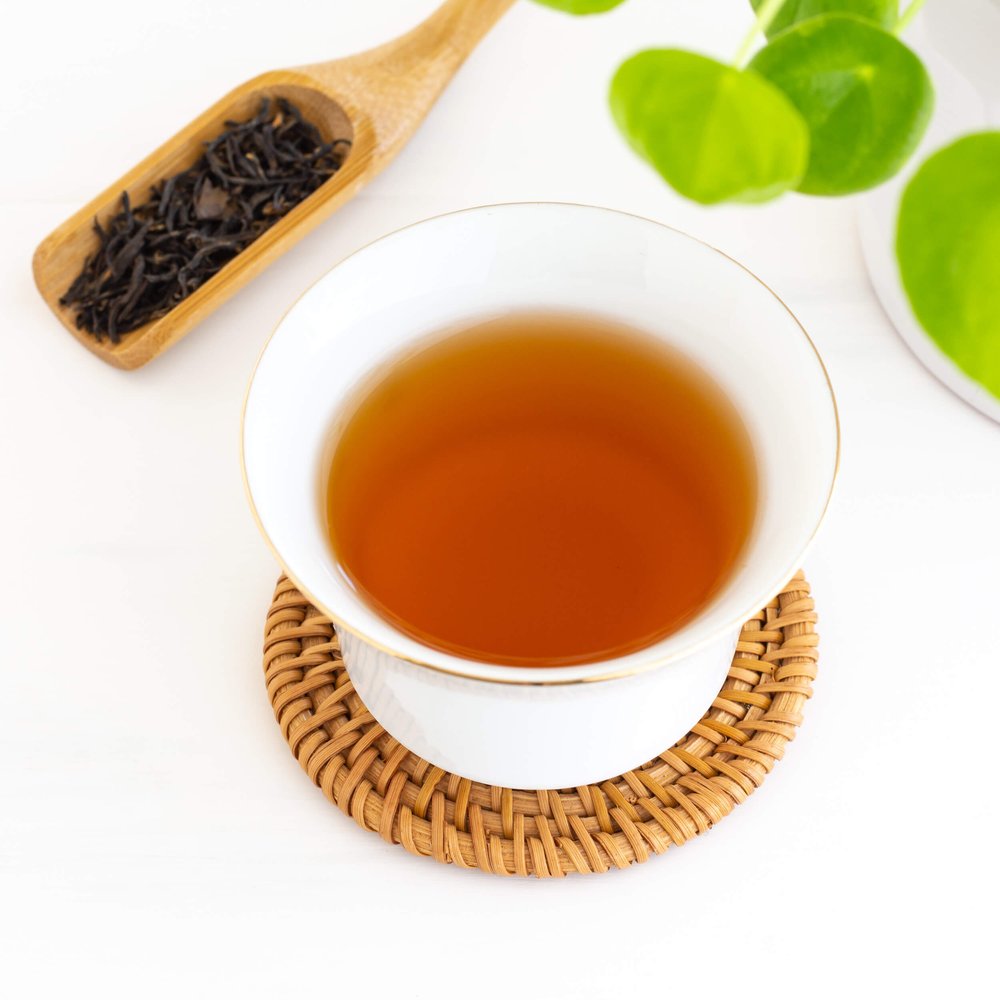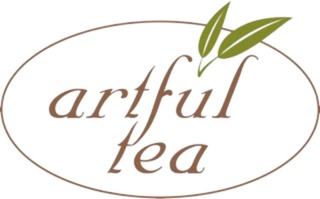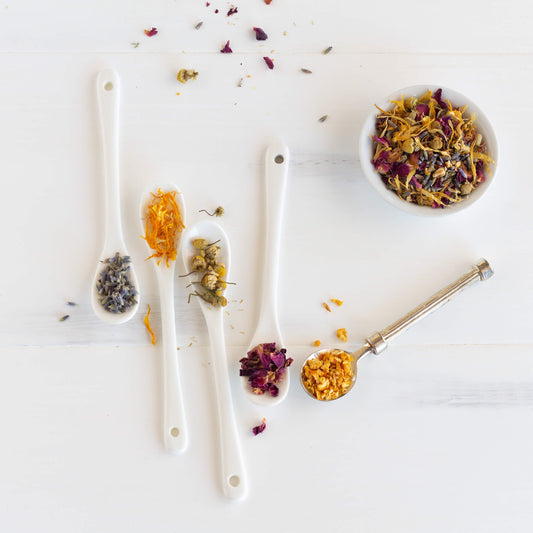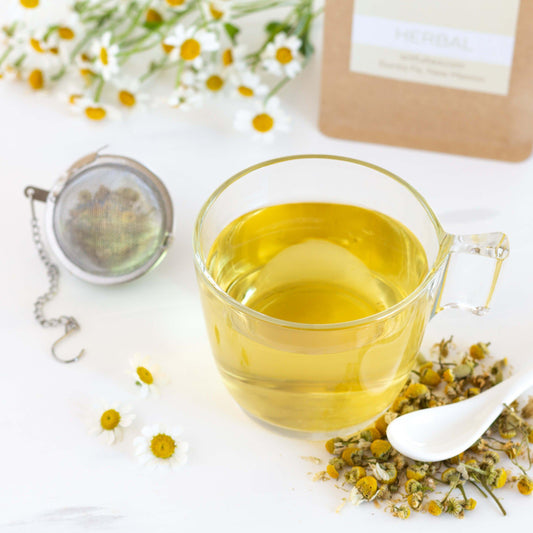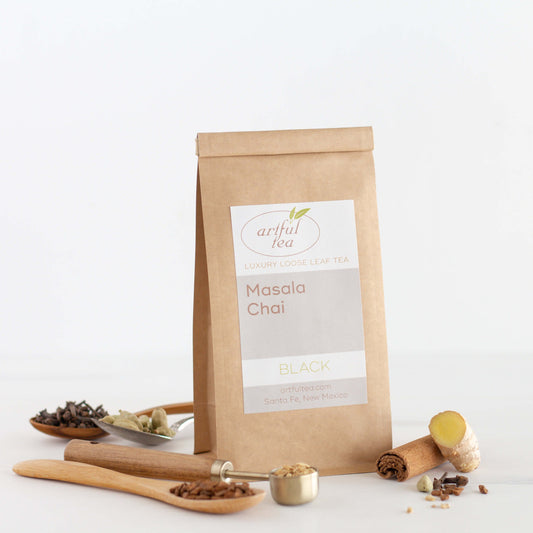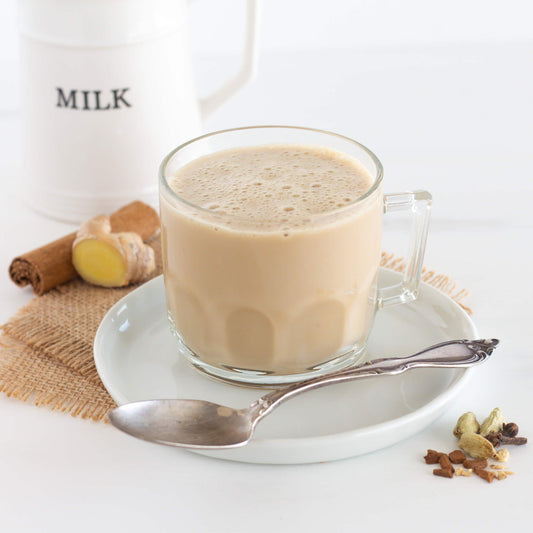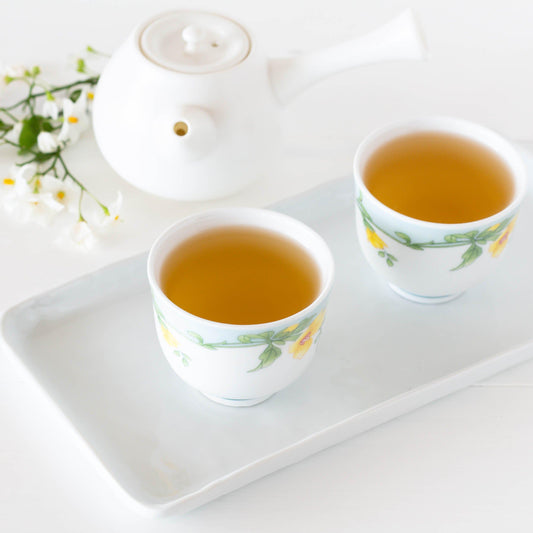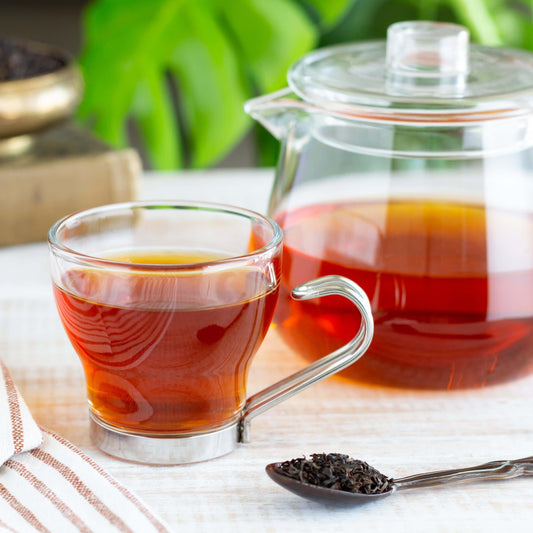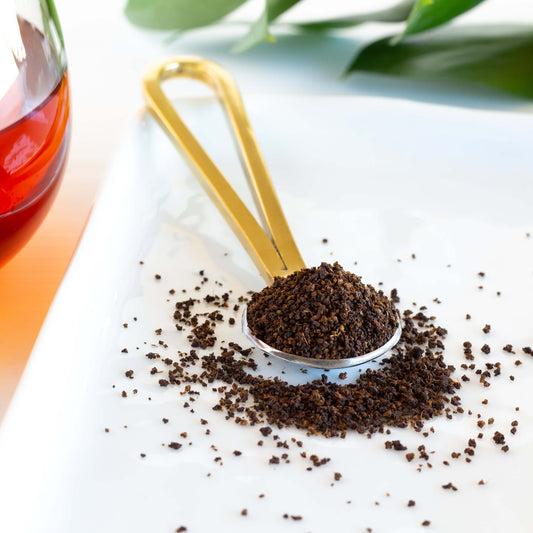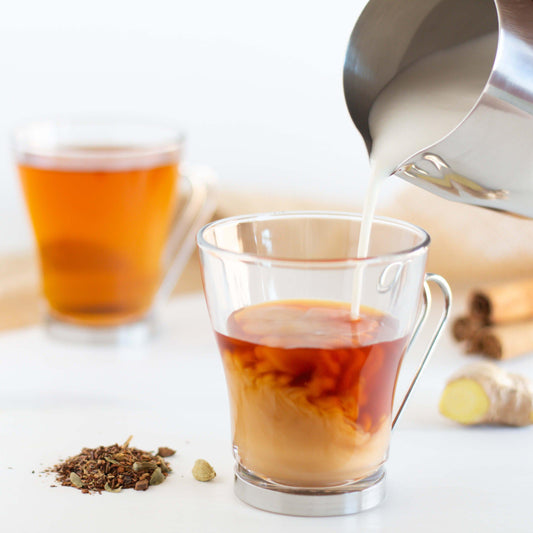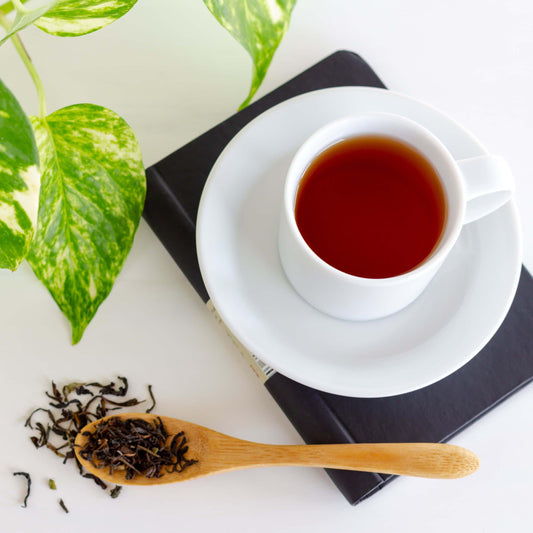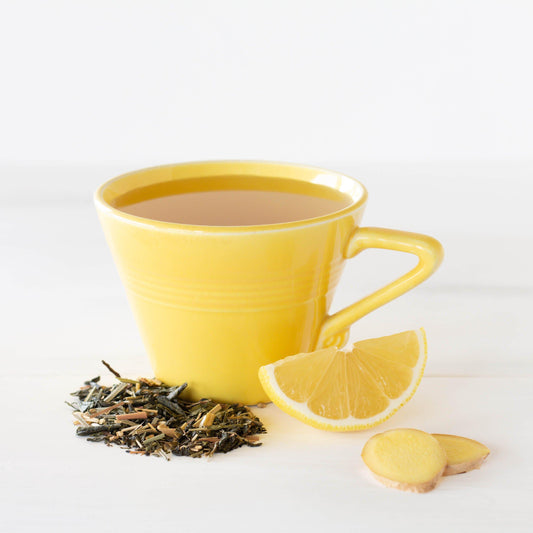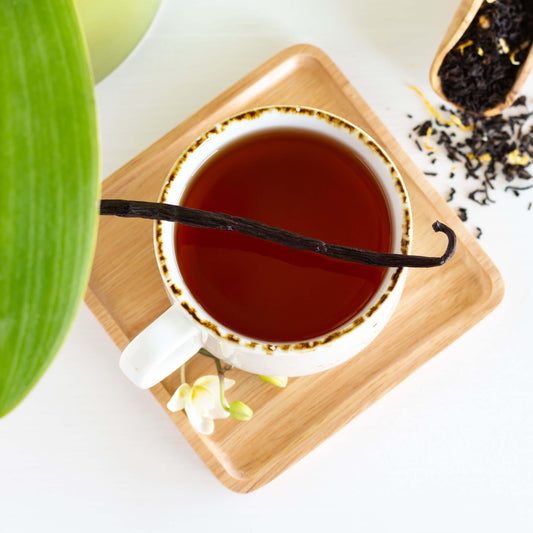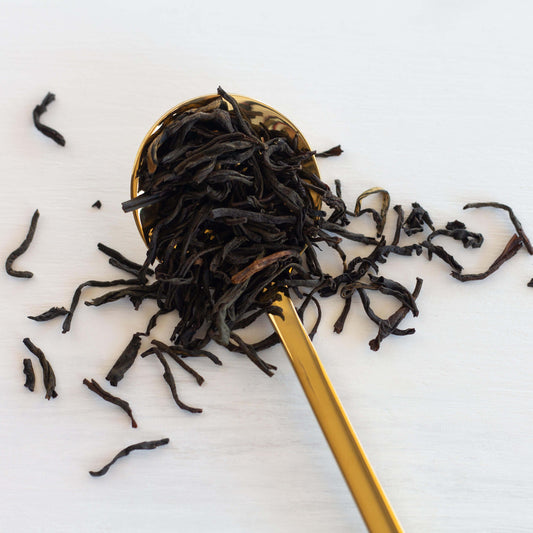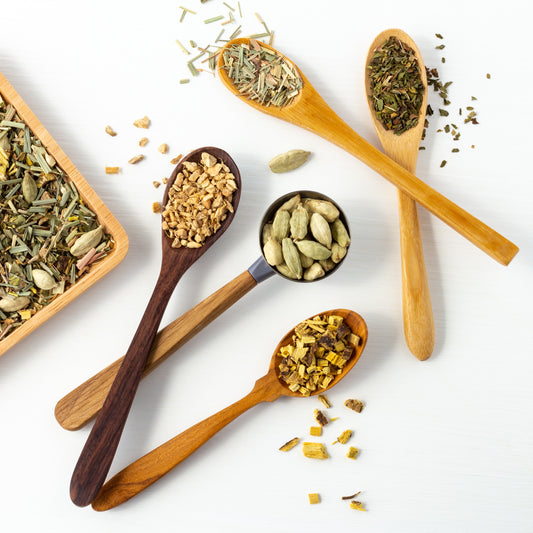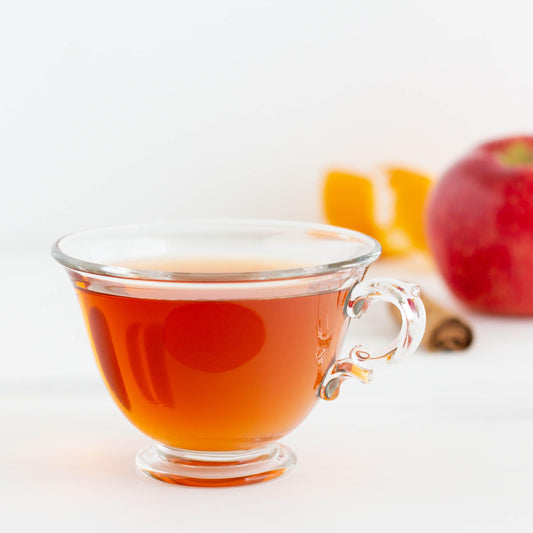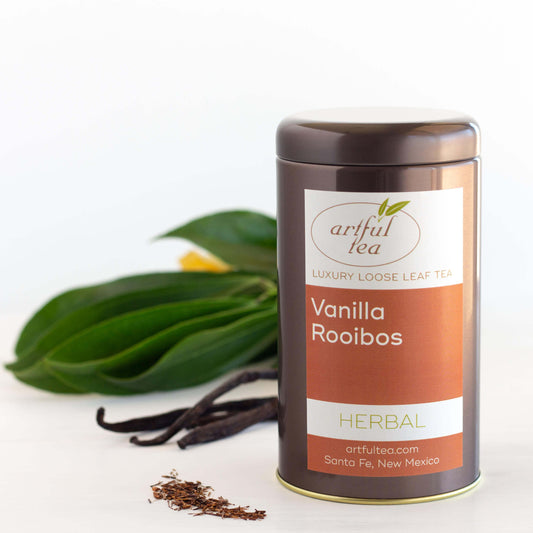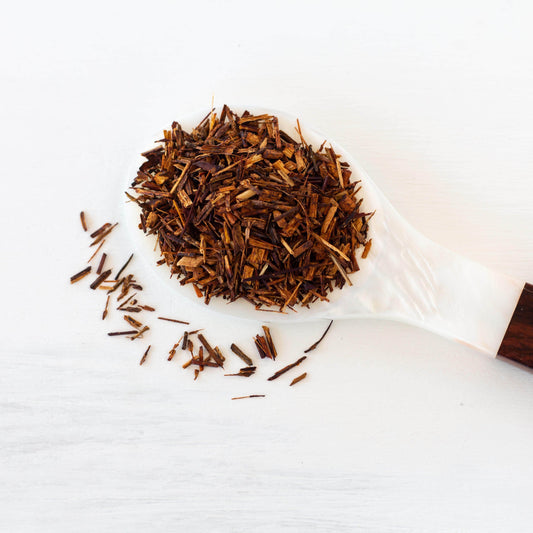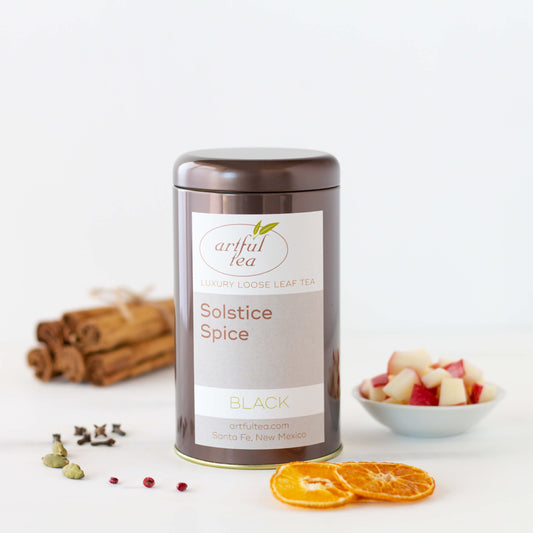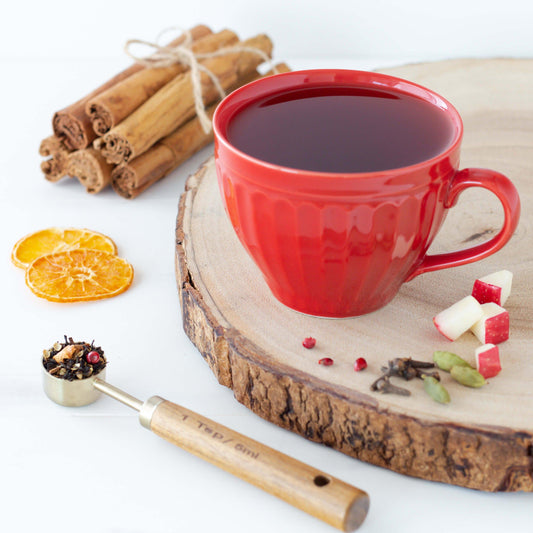Whether you’re looking for a little boost in the morning, or are trying to steer clear of caffeine entirely, it’s always important to consider the caffeine content when selecting a tea. Caffeinated teas range from trace amounts of caffeine to high caffeine teas with about half the caffeine level of a cup of coffee. Herbal and rooibos teas contain no caffeine at all.
Many people looking for an alternative to coffee turn to tea to provide a milder morning pick-me-up that still contains some caffeine. Here at ArtfulTea, we carry teas with a wide range of caffeine levels, from hearty Indian blacks to caffeine-free tisanes and everywhere in between!

How much caffeine is in tea?
There are a number of factors that play a part in the caffeine present in loose leaf tea. Caffeine levels in tea can vary from about half that of a cup of coffee to only trace amounts. It can be difficult to determine the caffeine content of a particular type of tea, and often may not be possible outside of a laboratory setting.
In general, black tea is assumed to have more caffeine, white and green tea are assumed to have less caffeine, and oolong falls somewhere in the middle. In reality, however, different teas can vary widely in terms of their caffeine content regardless of tea type.
While it’s possible to give estimates when it comes to the caffeine content of different teas, in reality there are often too many factors that contribute to caffeine levels in tea to provide a definite amount. When the tea leaves were harvested, how they were processed, and the specific varietals of the tea plant they come from all influence the caffeine levels of a particular tea.
In addition, how the tea is brewed, including factors like water temperature, the amount of leaves, and steeping time, all have a significant influence on how much caffeine is present in a brewed cup. The caffeine present in tea may also affect different people in different ways according to their unique sensitivities and biochemistry.
What factors influence the caffeine content of tea
The caffeine levels of a particular tea aren’t determined by any one factor. Instead, caffeine content is influenced by a wide variety of different causes.
Tea varietal
All tea made from the camellia sinensis plant contains some amount of caffeine. This is true even of teas that are “decaffeinated” through a chemical process, since they still contain trace amounts of caffeine. The tea plant contains two main varietals: camellia sinensis var. sinensis and camellia sinensis var. assamica. Camellia sinensis var. sinensis is indigenous to China and tends to be lower in caffeine, while camellia sinensis var. assamica is indigenous to India and tends to be higher in caffeine.
Harvest time
Teas that are harvested in the spring tend to be higher in caffeine than teas that are harvested later in the year. This is particularly true of silver tip or silver needle teas like Jasmine Silver Needle that are composed of the first downy, furled buds and tips of the tea plant.
Growing practices
Teas that are shade-grown are higher in caffeine. The shading process induces a stress response in the plant, which increases the caffeine, l-theanine, and chlorophyll levels in order to compensate for the lack of sunlight. Examples of shade-grown teas include green teas like Gyokuro and Kabusecha, as well as powdered green teas like matcha.
Processing methods
Processing methods can also influence the caffeine content of tea. Tea leaves that are cut, crushed, or torn tend to produce a more concentrated cup of tea with a higher caffeine level. On the other hand, unbroken tea leaves tend to produce tea that is lower in caffeine, since the brew will be less concentrated.
Water temperature
Hotter water will increase the caffeine content of a particular tea. This means that teas like black tea, which tend to be prepared using boiling water, will have more caffeine than other types of tea, like green tea or white tea, that tend to be prepared using cooler water.
Steep time
Steep time also influenced the caffeine present in tea. The longer your infuse your tea leaves, the higher the caffeine level will be. Since black and pu-erh teas tend to be steeped for longer periods of time, they tend to be higher in caffeine than white, green, or oolong teas.
Amount of tea leaves
This one is pretty straightforward: the more tea leaves you use, the higher the caffeine level will be! If you’re looking for a super strong, hearty cup, you can feel free to use more than the recommended one teaspoon per six ounces. On the other hand, if you want to lower the caffeine level, you may want to use less tea for a weaker cup.
Tea types and caffeine levels
There’s a common understanding that different tea categories have different caffeine levels associated with them. In reality, this is only partly true. Teas that are steeped longer and at hotter temperatures, like black tea, often have a higher caffeine content in the brewed cup, while teas that are steeped for a shorter period of time at lower temperatures, like green and white teas, often have lower caffeine levels.
That said, water temperature and steep time are only two of the many factors that go into the caffeine content of an individual tea. The precise amount of caffeine in a particular type of tea can even vary from year to year and harvest to harvest thanks to external environmental conditions. Ultimately, it’s hard to give a precise numerical value to the caffeine present in a particular tea without advanced scientific instruments.
So how do you know which tea to pick if you’re looking for a specific caffeine level? Luckily, there are a few easy heuristics you can use to help you decide. Since caffeine affects everyone differently, it’s also a good idea to listen to your body and take it slow when trying out a new tea if you’re sensitive to caffeine.
Black tea and caffeine
Black teas contain a moderate amount of caffeine, about half that of a cup of coffee. Indian black teas like Assam and Nilgiri, as well as hearty breakfast blends like Irish Breakfast and English Breakfast, contain the highest amount of caffeine. Chinese black teas like China Keemun and Lapsang Souchong, meanwhile, contain slightly less caffeine and are a bit mellower. Flavored black teas also contain slightly less caffeine, since additional ingredients are blended with the tea and somewhat dilute the caffeine content.
Pu-erh tea and caffeine
Pu-erh teas also contain a moderate amount of caffeine, similar to that of black teas. These aged, fermented teas, while stimulating, have a rich, earthy flavor with less acidity and tannic bite than black teas. Some people find pu-erh teas to be especially stimulating, but this can vary from person to person.
Oolong tea and caffeine
Oolong teas can range in their caffeine content, depending on how they are processed and prepared. In general, oolong teas have slightly less caffeine than black tea, but slightly more caffeine than green or white tea. Oolong teas can also be infused many times over, with each successive steep containing less caffeine.
Green tea and caffeine
In general, green tea is lower in caffeine, containing about half that of black tea and a quarter that of a cup of coffee. Shade-grown green teas are a notable exception to this rule, with a high caffeine content similar to or even higher than that of black tea. Matcha, made from shade-grown powdered green tea, has an even higher caffeine content since it’s more concentrated.
White tea and caffeine
White tea is generally fairly low in caffeine. However, some silver tip teas, like Bashan Silver Tip and Jasmine Silver Needle, are higher in caffeine, since they are produced from the first buds and tips of the tea plant harvested early in the spring.
Mate and caffeine
Yerba mate, although not produced from the tea plant camellia sinensis, is high in caffeine, containing almost as much as coffee per cup. Sometimes called mateine, the kind of caffeine contained in mate is said to contribute to focus, clarity, and alertness, without the jitters that come from drinking too much coffee, making it a great alternative for those looking for a stimulant with fewer adverse side effects. It is traditionally drunk out of a hollow gourd through a straw known as a bombilla, but can also be prepared in the same way as other teas and tisanes.
Herbal tea and caffeine
Herbal teas or tisanes are always naturally caffeine-free. While we often call herbal tisanes “teas” colloquially, herbal tea can be made from all sorts of different herbs and flowers, none of which are related to the camellia sinensis tea plant. These blends can be a wonderful alternative to traditional teas for those looking to avoid caffeine entirely, as well as a great option to enjoy in the afternoon and evening.
Rooibos tea and caffeine
Like herbal teas, rooibos “tea” contains no caffeine. Rooibos is a type of herbal tea primarily grown in South Africa and has a mild, sweet taste and lots of health benefits. Rooibos can be consumed on its own, and also comes in a variety of tasty flavored blends.
Caffeine and the body
Caffeine can be a potent stimulant, with both positive and negative potential side effects. Many people rely on caffeine to jump-start their morning, and caffeine can be a great way to give your body a little energy boost and to increase mental alertness and physical stamina.
It’s important to keep in mind that people can have very different reactions to caffeine, with some able to tolerate very high amounts, and others able to tolerate very little, if any, caffeine.
While everybody’s different, it’s a good idea to steer clear of caffeine in the evening so that you don’t disrupt your sleep, and to be careful when drinking caffeinated tea on an empty stomach. Many people are familiar with the increased heart rate and jittery feeling that comes with consuming too much caffeine, but even if you don’t experience any adverse side effects, it’s always best to practice moderation! For those who want to keep their caffeine intake to a minimum, there are plenty of herbal options.
Whether you’re looking for a hearty, highly caffeinated morning cup or are interested in skipping caffeine altogether, there are a wide variety of teas to choose from. Whatever sort of tea you’re in the mood for, here at ArtfulTea we’re sure to have the perfect cup!
